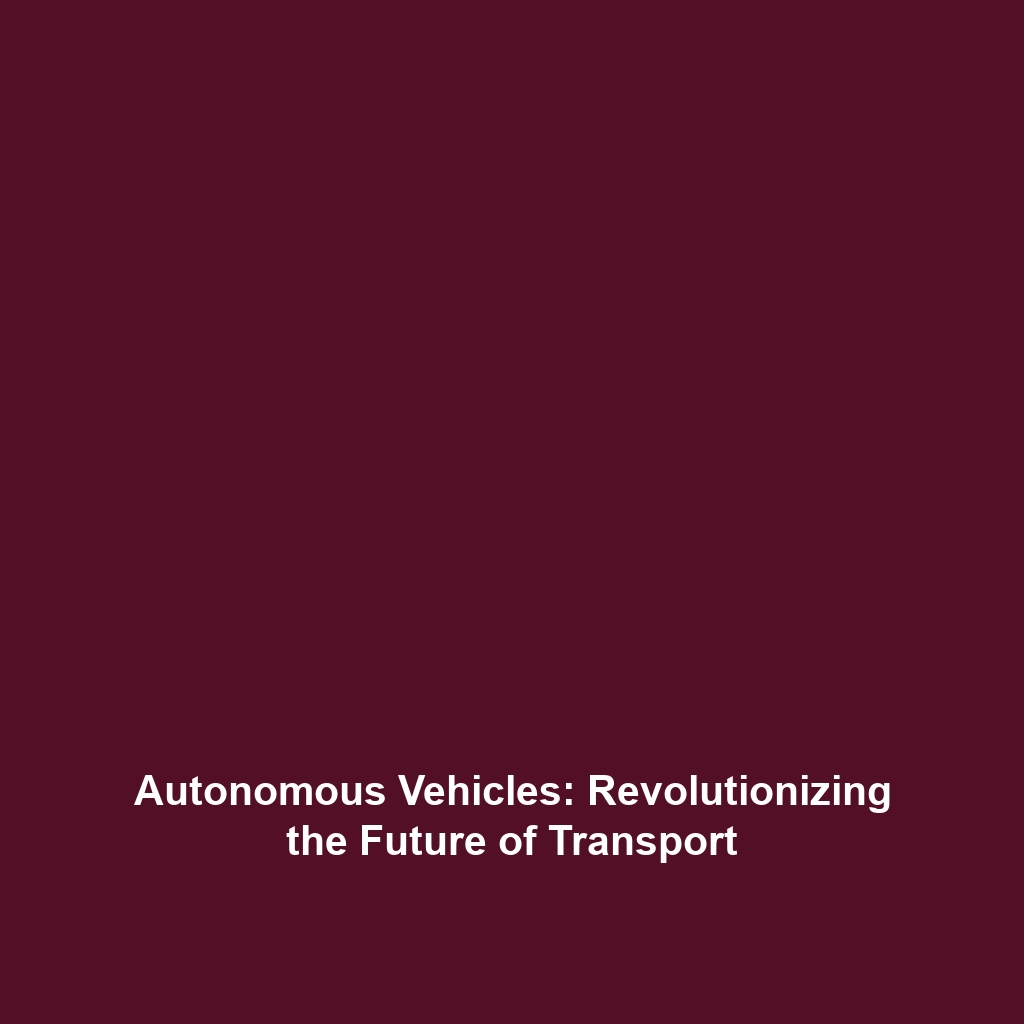Enhancing Battery Technology for Fleet Vehicles
Introduction
The evolution of battery technology has significant implications for fleet vehicles, especially taxis and delivery trucks, which require minimal downtime for optimal operations. As the demand for eco-friendly transport solutions grows, innovative approaches in battery design and management are vital in keeping these vehicles on the road. This article highlights how advancing battery technologies can enhance fleet performance, reduce operational costs, and contribute to sustainability goals.
Key Concepts
Battery Performance and Fast Charging
One major concept within the realm of battery technology is the development of fast-charging solutions. These advancements allow fleet vehicles to recharge in considerably less time than traditional options, effectively minimizing downtime.
Energy Density and Lifecycle Management
Another important aspect is the energy density of battery systems. Higher energy density translates to longer driving ranges and less frequent charging cycles, essential traits for fleet vehicles. Additionally, lifecycle management technologies help prolong battery life and optimize their use.
Integration with Fleet Management Systems
Integrating advanced battery monitoring systems with fleet management solutions enhances operational efficiency. Such systems allow for real-time monitoring of battery performance, ensuring that vehicles are charged at optimal times.
Applications and Real-World Uses
Innovative approaches in battery technology are already being implemented in various ways in the transportation sector:
- Fast-Charging Stations: Cities are increasingly deploying fast-charging infrastructure to support taxis and delivery trucks.
- Enclosed Charging Solutions: Some fleets have started using buses or depots equipped with rapid charging systems for quick recharge operations.
- Telematics Integration: Companies are leveraging telematics to efficiently manage battery health and charging schedules.
Current Challenges
Despite the promising advancements, several challenges exist in the realm of battery technology for fleet vehicles:
- High upfront costs associated with advanced battery systems.
- Limited availability of fast-charging stations in certain regions.
- Technological limitations related to battery size and weight, which can hinder vehicle design.
Future Research and Innovations
The future of battery technology is poised to introduce several innovations that could benefit fleet vehicles:
- Solid-State Batteries: Research into solid-state lithium batteries promises increased safety and capacity.
- Wireless Charging: Innovations in wireless charging technology could eliminate the need for physical charging connections.
- Battery Recycling Technologies: Advanced methods for recycling batteries are expected to reduce environmental impacts.
These breakthroughs could revolutionize how fleet vehicles operate, aiming for comprehensive sustainability and efficiency.
Conclusion
In conclusion, advancing battery technology stands to significantly enhance fleet vehicle operation, especially for taxis and delivery trucks requiring minimal downtime. By embracing innovative solutions and navigating current challenges, companies have the opportunity to innovate and lead in a rapidly evolving sector. For those interested in the future of sustainable transport, understanding the implications of these technological advancements is essential. Explore more on related topics such as energy density in batteries and next-gen fleet management solutions.

